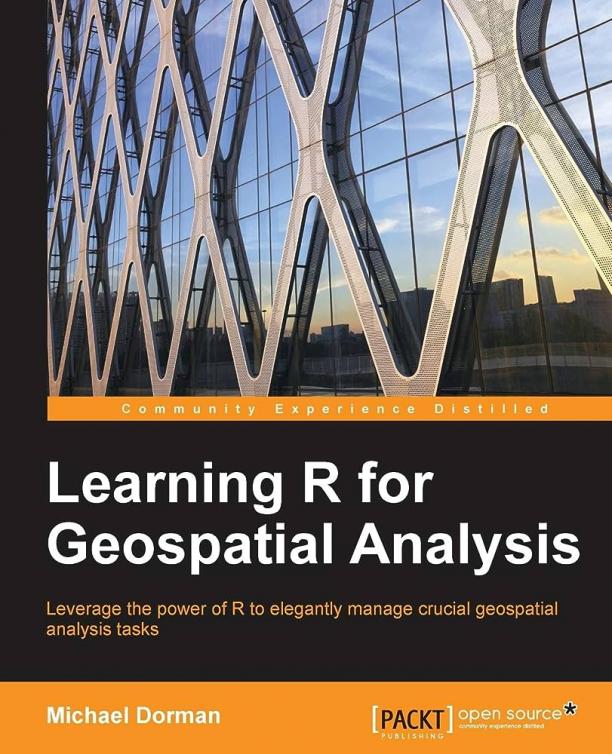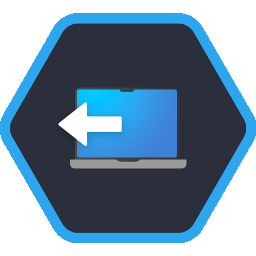Most Commented
Geospatial Analysis with R




Description material

Published 8/2023
Created by Dinesh Bishwakarma
MP4 | Video: h264, 1280x720 | Audio: AAC, 44.1 KHz, 2 Ch
Genre: eLearning | Language: English | Duration: 99 Lectures ( 14h 6m ) | Size: 14.7 GB
Beginner to Advance
What you'll learn
To learn the basics of R Programming
To carry out the geospatial analysis in R programming
To perform geospatial operations using Vector and Raster Data
To do the GIS based research using R programming
To create the static, interactive and animated map in R
Requirements
Basic concept on any Programming Language
Basic knowledge about Geographic Information System and Remote Sensing
Description
In the rapidly evolving data-driven world, geospatial analysis has become a vital tool for understanding spatial relationships, uncovering patterns, and making informed decisions. The "Geospatial Analysis with R" Udemy course is an immersive and practical journey designed to equip learners with the skills and knowledge required to harness the power of R for geospatial data analysis and visualization. Whether you are a seasoned data analyst or a novice with a passion for geography, this course will take you on a comprehensive exploration of geospatial data, from acquisition and preprocessing to advanced analysis techniques and web mapping applications.1. The Foundation of Geospatial Analysis: The course begins with an introduction to geospatial data and its significance in various domains. Learners will grasp the fundamentals of spatial data types, coordinate reference systems, and spatial projections, setting the stage for a deeper understanding of spatial analysis with R. Additionally, popular geospatial libraries such as sf, raster, sp, and leaflet will be introduced, providing learners with the necessary tools to dive into spatial data manipulation and visualization.2. Data Acquisition and Preprocessing: To embark on geospatial analysis, one must first acquire spatial data from different sources. This module guides learners through the process of acquiring data from shapefiles, GeoJSON, raster files, and other formats. Furthermore, it emphasizes the importance of data cleaning and preprocessing to ensure data accuracy and reliability. Learners will gain hands-on experience in preparing spatial data for analysis, an essential step before delving into more advanced techniques.3. Spatial Data Visualization: Visualization plays a crucial role in effectively communicating spatial information. In this module, learners will learn to create visually appealing and informative maps using R's powerful visualization package, ggplot2. The course will cover customizing maps with layers, legends, and labels, allowing learners to tell compelling stories with their geospatial data. Moreover, learners will explore the capabilities of the leaflet package to create interactive web maps, facilitating easy sharing and presentation of their analysis results.4. Spatial Analysis Techniques: Once the foundation is laid, learners will delve into fundamental spatial analysis techniques. They will learn how to perform spatial operations, including spatial joins and buffering, which are essential for combining and analyzing spatial data from various sources. Additionally, the course will cover advanced analysis techniques such as spatial interpolation and geostatistics, enabling learners to gain deeper insights into spatial patterns and relationships.5. Spatial Data Modeling: This module introduces learners to the world of spatial data modeling. They will discover geospatial regression, a powerful tool for modeling spatial relationships, allowing them to explore how geographic factors impact their data. Furthermore, learners will be introduced to machine learning techniques applied to geospatial data, equipping them with the skills to build predictive models for spatial analysis.6. Web Mapping Applications: In the modern era of data visualization and sharing, web mapping has become a valuable skill. This module will guide learners through the process of developing interactive web maps using R and the leaflet package. Learners will learn how to incorporate their spatial analysis results into web maps, enhancing data accessibility and communication.7. Geospatial Data Analysis Projects: The course concludes with real-world geospatial analysis projects, challenging learners to apply the concepts and techniques they have learned throughout the course. These projects will span diverse domains, such as environmental analysis, urban planning, and public health, providing learners with practical experience in solving spatial problems using R.By the end of "Geospatial Analysis with R," learners will have developed the expertise to work confidently with geospatial data, make data-driven decisions, and visualize geographic information in captivating ways. This course equips learners, regardless of their level of expertise, to become proficient geospatial analysts, unleashing the power of spatial data for insightful analysis and decision-making. Enroll today and embark on an exciting journey to explore the world of geospatial analysis with R!
Who this course is for
Those who are interested in Geospatial Analysis using programming language.
Buy Premium Account From My Download Links & Get Fastest Speed.
https://1dl.net/92t4du31ej5q/Geospatial_Analysis_with_R.part1.rar
https://1dl.net/2ye0kjznf87f/Geospatial_Analysis_with_R.part2.rar
https://1dl.net/3ukf7bxpi2zn/Geospatial_Analysis_with_R.part3.rar
https://1dl.net/jue6yod3p7ol/Geospatial_Analysis_with_R.part4.rar
https://1dl.net/l2pczwf9hf2h/Geospatial_Analysis_with_R.part5.rar
https://1dl.net/2vwrygf6i29z/Geospatial_Analysis_with_R.part6.rar
https://1dl.net/yvm9069j2bau/Geospatial_Analysis_with_R.part7.rar
https://1dl.net/c738puv33gqg/Geospatial_Analysis_with_R.part8.rar
https://nitroflare.com/view/4CF4D24957A6BDB/Geospatial_Analysis_with_R.part1.rar
https://nitroflare.com/view/FD0116436F4F8C6/Geospatial_Analysis_with_R.part2.rar
https://nitroflare.com/view/F19A2A8FB2082C1/Geospatial_Analysis_with_R.part3.rar
https://nitroflare.com/view/23AE0D59E1F6DD5/Geospatial_Analysis_with_R.part4.rar
https://nitroflare.com/view/0245775369D3638/Geospatial_Analysis_with_R.part5.rar
https://nitroflare.com/view/4E957654927A9A9/Geospatial_Analysis_with_R.part6.rar
https://nitroflare.com/view/367D14F46AD2F55/Geospatial_Analysis_with_R.part7.rar
https://nitroflare.com/view/B567A8542CF32DC/Geospatial_Analysis_with_R.part8.rar
https://rapidgator.net/file/dd51b92086de06e31e36b7c38e96cca3/Geospatial_Analysis_with_R.part1.rar.html
https://rapidgator.net/file/043213400a4612b66139960df8e2e696/Geospatial_Analysis_with_R.part2.rar.html
https://rapidgator.net/file/7d4f35cbc92ff2235e56c53b422961bd/Geospatial_Analysis_with_R.part3.rar.html
https://rapidgator.net/file/c4ee32870367e5f3e05622533eac79ec/Geospatial_Analysis_with_R.part4.rar.html
https://rapidgator.net/file/36c6f893b7d44056c96c21a813e42eec/Geospatial_Analysis_with_R.part5.rar.html
https://rapidgator.net/file/b8bc03898008943bccb9b85dd01a813d/Geospatial_Analysis_with_R.part6.rar.html
https://rapidgator.net/file/925bf9b2993bb0671cc5b4e20eb58656/Geospatial_Analysis_with_R.part7.rar.html
https://rapidgator.net/file/b6b0ac78c1aa3c106589b413df32ab8d/Geospatial_Analysis_with_R.part8.rar.html
Join to our telegram Group
Information
Users of Guests are not allowed to comment this publication.
Users of Guests are not allowed to comment this publication.
Choose Site Language
Recommended news
Commented


![eM Client Pro 9.2.1735 Multilingual [Updated]](https://pikky.net/medium/wXgc.png)






![Movavi Video Editor 24.0.2.0 Multilingual [ Updated]](https://pikky.net/medium/qhrc.png)

